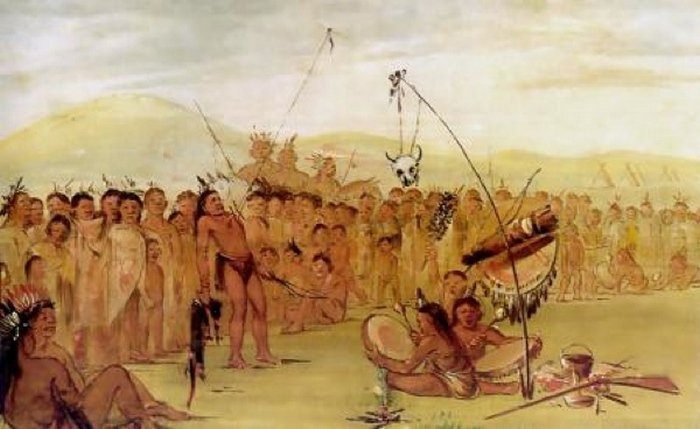Native American Sun Dance: Important Ceremony Of The Plains Indians Of North America
Ellen Lloyd - AncientPages.com - The Native American Sun Dance is an important religious ceremony of the Plains Indians of North America. The tribes of the Great Plains saw the Sun as a manifestation of the Great Spirit.
The Sun Dance is performed not only in honor of the Sun but also to bring the dancers visions. It is a spiritual ritual intended to strengthen ties between people, animals, and nature.
The Sun Dance can last for several days and nights. It is often an agonizing ordeal for those who participate. The authorities in the United States found the ritual barbaric and prohibited the Sun Dance between 1905 and 1978.
In the 1930s, the Sun Dance was relearned and practiced once again. When and where the Sun Dance originally began is not entirely clear. According to some historians, the tribes Cheyenne, Blackfoot, and the Sioux were the first who performed the dance. Later the tradition spread among the Indians, and today it is practiced by numerous tribes.
Traditionally, a Sun Dance was held by each tribe once a year in late spring or early summer, when the buffalo congregated after the long Plains winters.
The Sun Dance is performed in a sacred circle around a high pole.
According to the Oklahoma Historical Society, young men dance around a pole to which they are fastened by "rawhide thongs pegged through the skin of their chests." Although not all Sun Dance ceremonies include dancers being ritually pierced, the object of the sun dance is to offer personal sacrifice as a prayer for the benefit of one's family and community.
At most ceremonies, family members and friends stay in the surrounding camp and pray and support the dancers, and the Medicine Man prays on behalf of the tribe, the world, and all creation. The dancers fast for many days, and the ceremony takes place over a period lasting several days and nights. More than 100 tribe members dance to a drum beat, which represents the heart of the universe.
The ceremony is brutal and causes many dancers to collapse, what Indians call taking a fall. During the dance, the participants move sideways around the pile while they lean back so that the breast skin is stretched out and eventually burst, after hours or days full of pain. This is followed by a vision, similar to what happens on a vision quest, only here many people are given guidance for the good of the tribe. In a sense, this is a community vision quest to renew the people and the bioregion.
The Arapaho, Cheyenne, Blackfoot, and Sioux nations all practice sacrificial acts of piercing the flesh, often described pejoratively as "torture" by outsiders. Others, such as the Ute, Shoshone, and Crow nations, perform sacrificial acts of embodying their spiritual intentions through fasting and intense dancing, but not through the piercing.
Some Indigenous interpreters have suggested an analogy between the piercing of sun dancers and the piercing of Jesus on the cross, seeing both as acts of voluntary sacrifice on behalf of other beings and the cosmic welfare.
Self-inflicted torture has also come to symbolize rebirth. The torture represents death. The Sun Dancer is reborn, mentally and spiritually, and physically, along with the renewal of the buffalo and the entire universe. Then, the person is symbolically resurrected.
Written by Ellen Lloyd - AncientPages.com
Updated on July 28, 2021
Copyright © AncientPages.com All rights reserved. This material may not be published, broadcast, rewritten or redistributed in whole or part without the express written permission of AncientPages.com
More From Ancient Pages
-
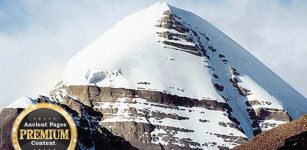 Mysterious Mount Kailash: Secrets Of The Man-Made Pyramid And Entrance To The City Of The Gods
Ancient Mysteries | Oct 27, 2014
Mysterious Mount Kailash: Secrets Of The Man-Made Pyramid And Entrance To The City Of The Gods
Ancient Mysteries | Oct 27, 2014 -
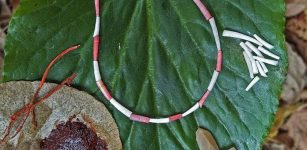 15,000-Year-Old Shell Beads Found Kebara Cave Are The Oldest Known Use Of Organic Red Pigments
Archaeology | Oct 27, 2023
15,000-Year-Old Shell Beads Found Kebara Cave Are The Oldest Known Use Of Organic Red Pigments
Archaeology | Oct 27, 2023 -
 Real-Life Excalibur Found Underwater In Bosnia – Medieval Sword In Stone Pulled Out
Archaeology | Oct 31, 2019
Real-Life Excalibur Found Underwater In Bosnia – Medieval Sword In Stone Pulled Out
Archaeology | Oct 31, 2019 -
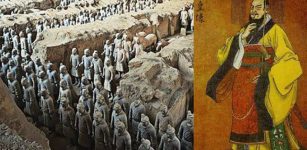 Mysterious History Of Qin Shi Huang – First Emperor Of China
Featured Stories | Jan 17, 2016
Mysterious History Of Qin Shi Huang – First Emperor Of China
Featured Stories | Jan 17, 2016 -
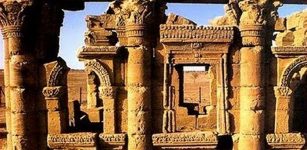 Ancient Great City Of Napata In The Kingdom Of Kush
Civilizations | Dec 30, 2015
Ancient Great City Of Napata In The Kingdom Of Kush
Civilizations | Dec 30, 2015 -
 Legend Of Milky Way’s Celestial Portal And The Star City From The Bowuzhi By Zhang Hua
Chinese Mythology | Feb 14, 2024
Legend Of Milky Way’s Celestial Portal And The Star City From The Bowuzhi By Zhang Hua
Chinese Mythology | Feb 14, 2024 -
 New Video Footage Reveals Intriguing Viking-Style Shipwreck At The Bottom Of Norway’s Largest Lake Mjøsa
Archaeology | May 5, 2023
New Video Footage Reveals Intriguing Viking-Style Shipwreck At The Bottom Of Norway’s Largest Lake Mjøsa
Archaeology | May 5, 2023 -
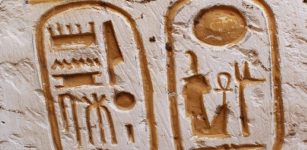 Palace Located Inside Ancient Temple Of Ramses II Discovered In Abydos, Egypt
Archaeology | Apr 1, 2019
Palace Located Inside Ancient Temple Of Ramses II Discovered In Abydos, Egypt
Archaeology | Apr 1, 2019 -
 Archaeologists Discover Ancient Mayan Board Game – Here’s What It Can Teach Modern Educators
Featured Stories | May 19, 2023
Archaeologists Discover Ancient Mayan Board Game – Here’s What It Can Teach Modern Educators
Featured Stories | May 19, 2023 -
 Mystery Of Charterhouse Warren’s Early Bronze Age Site Solved By Scientists
Archaeology | Dec 27, 2024
Mystery Of Charterhouse Warren’s Early Bronze Age Site Solved By Scientists
Archaeology | Dec 27, 2024 -
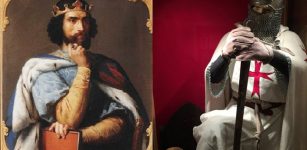 Did Richard The Lionheart Order Assassins To Kill Conrad Of Montferrat, King Of Jerusalem?
Featured Stories | Dec 27, 2018
Did Richard The Lionheart Order Assassins To Kill Conrad Of Montferrat, King Of Jerusalem?
Featured Stories | Dec 27, 2018 -
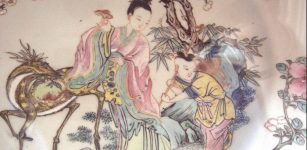 Goddess Xi Wangmu (Xiwangmu) Who Controlled Life, Death, Creation And Talked Directly To Humans In Chinese Mythology
Chinese Mythology | Mar 12, 2020
Goddess Xi Wangmu (Xiwangmu) Who Controlled Life, Death, Creation And Talked Directly To Humans In Chinese Mythology
Chinese Mythology | Mar 12, 2020 -
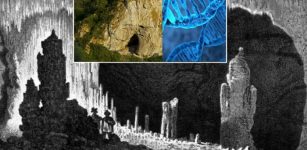 Neanderthals’ History Retrieved From Cave Sediments In Siberia And Spain – New Method
Archaeology | Apr 19, 2021
Neanderthals’ History Retrieved From Cave Sediments In Siberia And Spain – New Method
Archaeology | Apr 19, 2021 -
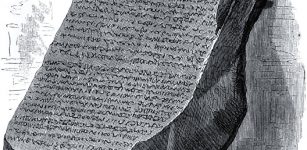 Rosetta Stone – Artifact That Solves The Riddle Of Egyptian Hieroglyphics
Artifacts | Sep 28, 2015
Rosetta Stone – Artifact That Solves The Riddle Of Egyptian Hieroglyphics
Artifacts | Sep 28, 2015 -
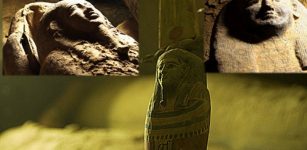 Collection Of 2,500 Years Old Sealed Coffins Unearthed In Saqqara, Egypt
Archaeology | Sep 8, 2020
Collection Of 2,500 Years Old Sealed Coffins Unearthed In Saqqara, Egypt
Archaeology | Sep 8, 2020 -
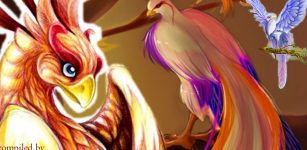 Mythical Beautiful Adarna Bird And Its Harmful Magical Power In Mythology Of Philippines
Myths & Legends | Jan 25, 2017
Mythical Beautiful Adarna Bird And Its Harmful Magical Power In Mythology Of Philippines
Myths & Legends | Jan 25, 2017 -
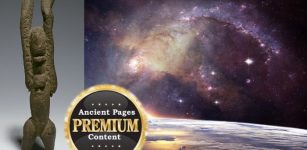 ‘Impossible’ Ancient Knowledge Of The Gods’ Star – Mysterious Beings – Part 2
Ancient Mysteries | Sep 4, 2021
‘Impossible’ Ancient Knowledge Of The Gods’ Star – Mysterious Beings – Part 2
Ancient Mysteries | Sep 4, 2021 -
 Peopling the Americas: Not “Out of Japan” – Popular Theory Debunked
Archaeology | Oct 13, 2021
Peopling the Americas: Not “Out of Japan” – Popular Theory Debunked
Archaeology | Oct 13, 2021 -
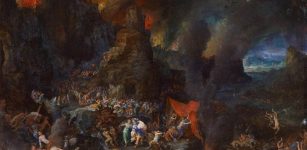 Hades – Land Of The Dead In Greek Beliefs Offered Punishment And Paradise Full Of Harmony
Featured Stories | Aug 15, 2019
Hades – Land Of The Dead In Greek Beliefs Offered Punishment And Paradise Full Of Harmony
Featured Stories | Aug 15, 2019 -
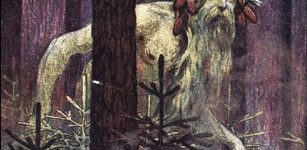 Leshy: Master Of Forest And Wildlife In Slavic Beliefs
Featured Stories | Mar 25, 2016
Leshy: Master Of Forest And Wildlife In Slavic Beliefs
Featured Stories | Mar 25, 2016

